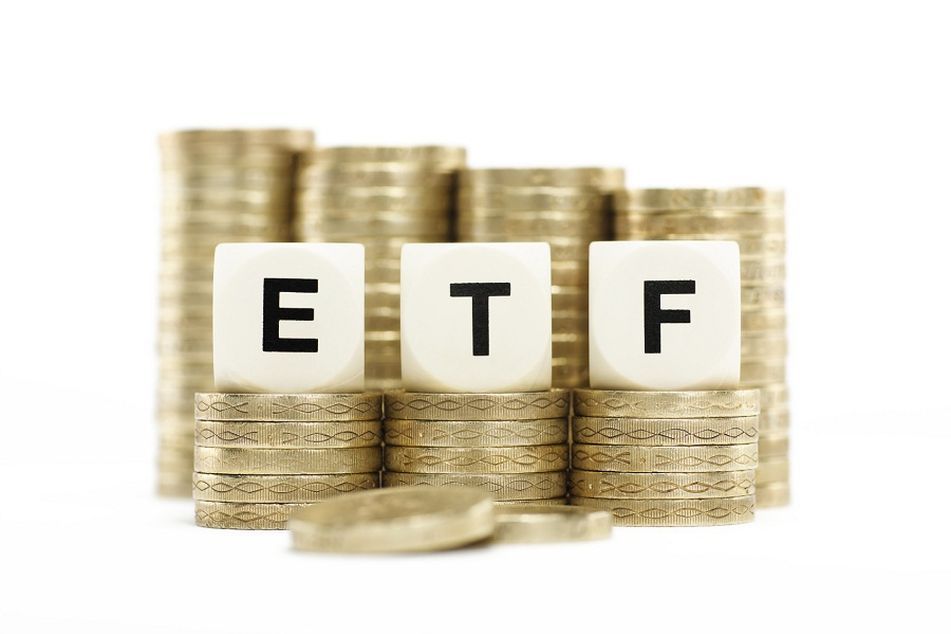ETF inflows on track to shatter 2020 record

Flows into exchange-traded funds have been unprecedented this year, even against the backdrop of a record 2020. Despite market valuations and inflation threats, financial advisers are keeping the pedal to the metal.
If flows into ETFs is any indication, investors and financial advisers are going full steam ahead into this market, shunning warnings of market bubbles and inflationary threats.
Through the end of June, net flows into exchange-traded funds reached $473 billion, which is just $31 billion shy of the record $504 billion for all of 2020.
“Part of the reason for the large flows is people have extra money,” said John Bovard, owner of Incline Wealth Advisors.
“People that were able to keep working last year have extra savings because they weren’t traveling or eating out last year, and they got stimulus money,” he added.
Bovard said he has been dollar-cost-averaging client assets into real estate investment trusts to potentially take advantage of inflation.
While the flows into ETFs are unprecedented even against the backdrop of a record 2020, the trend has been shifting away from bond ETFs toward equity funds this year, according to Todd Rosenbluth, director of mutual fund and ETF research at CFRA.
Bond ETF inflows set a record last year at $208 billion, which compares to $106 billion so far this year.
Meanwhile, equity ETFs have taken in $363 billion already this year, which compares to $249 billion for all last year.
“Advisers that built asset allocation models using fixed income have stayed focused throughout the year but have also been tactical with inflation and other narrower segments,” Rosenbluth said.
While it would be difficult to specifically track where the assets flooding into ETFs are coming from, Rosenbluth believes it’s a combination of a migration away from mutual funds, money moving from individual stock portfolios and money moving off the sidelines.
Last year was the first time ETF inflows crossed the $500 billion mark, breaking a previous high of more than $460 billion set in 2018.
Scott Bishop, executive director of wealth solutions at Avidian Wealth Solutions, said many of his clients are riding the bullish wave.
“Given that we have been in an overall bullish trend, many of my clients have been moving more towards stocks,” he said. “That is especially true as I see the bond market with almost no upside for the coming couple of years.”
Like a lot of advisers, Bishop has been training his clients to expect “interim volatility” and to “live through it.”
“We have been putting more money into the markets and into private investments since earlier this year,” he said.
Dennis Nolte, vice president at Seacoast Investment Services, said it is less about being bullish than it is about “buying the dips.”
“Since there have been record monies sitting in cash for a long time it’s not too surprising that after five quarters in a row of 5%-plus gains in the S&P 500 people are feeling a bit more comfortable with risk,” he said. “Another reason might be that folks also seem to be paying debt down pretty fast these days, so their personal balance sheets are in good shape.”
Considering that the S&P 500 Index is up 15.9% so far this year, following at 16.3% gain last year, a bullish mood is understandable.
CFRA’s breakdown of ETF asset flows show U.S. equity broad market ETFs leading the way this year with $100 billion worth of net inflows, which compares to $80 billion for all of 2020.
Global equity ETFs have taken in nearly $80 billion this year, which is a stark contrast to less than $20 billion last year.
Another extreme comparison is flows into corporate bond ETFs, which have attracted about $16 billion so far this year, compared to more than $81 billion last year.
Broad market bond ETFs have taken in about $55 billion this year, compared to about $77 billion last year.
Key to these examples is the data compares the first six months of 2021 to the full 12 months of 2020.
Jon Ulin, owner of Ulin & Co. Wealth Management, in some ways personifies the ETF flow patterns.
“Our contrarian mindset helped our advisers and clients to stay on course with our strategic model-based approach through the Covid-19 crash and not panic sell, yet we are not swayed to take the foot off the gas anytime soon in 2021 despite elevated investor sentiment, high market valuations and soaring inflation numbers as the U.S. markets grind higher,” Ulin said.
“As we are only in the baby-bull infant stages of the new economic cycle a year out since the crash, staying optimistic and managing portfolios for risk can better help investors’ brains and their portfolios stay on track,” he added.
Learn more about reprints and licensing for this article.








